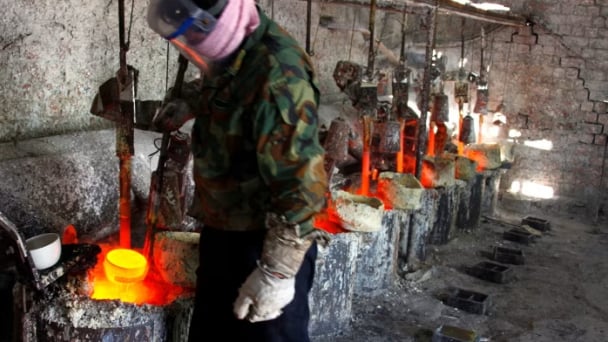June 21, 2025 | 10:10 GMT +7
June 21, 2025 | 10:10 GMT +7
Hotline: 0913.378.918
June 21, 2025 | 10:10 GMT +7
Hotline: 0913.378.918
The WHO's data show that from 2003 through March 2024, a total of 889 worldwide human cases of H5N1 infection had been recorded in 23 countries, resulting in 463 deaths and a 52 percent mortality rate. The majority of deaths occurred in Southeast Asian countries and Egypt.
The most recent death was in Vietnam in late March, when a 21-year-old male without underlying conditions died of the infection after bird hunting. So far, cases in Europe and the United States have been mild.
Jeremy Farrar, chief scientist at the WHO, said recently that H5N1, predominantly started in poultry and ducks, "has spread effectively over the course of the last one or two years to become a global zoonotic — animal — pandemic".
He said that the great concern is that the virus is increasingly infecting mammals and then develops the ability to infect humans. It would become critical if the virus develops the ability to "go from human-to-human transmission", Farrar said.
In the past month, health officials have detected H5N1 in cows and goats from 29 dairy herds across eight states in the US, saying it is an alarming development because those livestock weren't considered susceptible to H5N1.
The development worries health experts and officials because humans regularly come into contact with livestock on farms. In the US, there are only two recorded cases of human infection — one in 2022 and one in April this year in Texas. Both infected individuals worked in close proximity to livestock, but their symptoms were mild.
Wenqing Zhang, head of the WHO's global influenza program, told the Daily Mail that "bird-to-cow, cow-to-cow and cow-to-bird transmission have also been registered during these current outbreaks, which suggest that the virus may have found other routes of transition than we previously understood".
Zhang said that multiple herds of cow infections in the US states meant "a further step of the virus spillover to mammals".
The virus has been found in raw milk, but the Texas Health Services department has said the cattle infections don't present a concern for the commercial milk supply, as dairies are required to destroy milk from sick cows. In addition, pasteurization also kills the virus.
Darin Detwiler, a former food safety adviser to the Food and Drug Administration and the US Agriculture Department, said that Americans should avoid rare meat and runny eggs while the outbreak in cattle is going on to avoid the possibility of infection from those foods.
Nevertheless, both the WHO and the Centers for Disease Control and Prevention (CDC) said that the risk the virus poses to the public is still low. Currently no human-to-human infection has been detected.
On the potential HN51 public health risk, Farrar cautioned that vaccine development was not "where we need to be".
According to a report by Barron's, under the current plan by the US Health and Human Services Department, if there is an H5N1 pandemic, the government would be able to supply a few hundred thousand doses within weeks, then 135 million within about four months.
People would need two doses of the shot to be fully protected. That means the US government would be able to inoculate about 68 million people — 20 percent — of 330 million in case of an outbreak.
The situation is being closely watched by scientists and health officials. Some experts said that a high mortality rate might not necessarily hold true in the event the virus became contagious among people.
"We may not see the level of mortality that we're really concerned about," Seema Lakdawala, a virologist at Emory University, told The New York Times. "Preexisting immunity to seasonal flu strains will provide some protection from severe disease."
(Chinadaily)

(VAN) Poultry production in Poland, which has only started recovering from devastating bird flu outbreaks earlier this year, has been hit by a series of outbreaks of Newcastle disease, with the veterinary situation deteriorating rapidly.

(VAN) Extensive licensing requirements raise concerns about intellectual property theft.

(VAN) As of Friday, a salmonella outbreak linked to a California egg producer had sickened at least 79 people. Of the infected people, 21 hospitalizations were reported, U.S. health officials said.

(VAN) With the war ongoing, many Ukrainian farmers and rural farming families face limited access to their land due to mines and lack the financial resources to purchase needed agricultural inputs.

(VAN) Vikas Rambal has quietly built a $5 billion business empire in manufacturing, property and solar, and catapulted onto the Rich List.

(VAN) Available cropland now at less than five percent, according to latest geospatial assessment from FAO and UNOSAT.

(VAN) Alt Carbon has raised $12 million in a seed round as it plans to scale its carbon dioxide removal work in the South Asian nation.